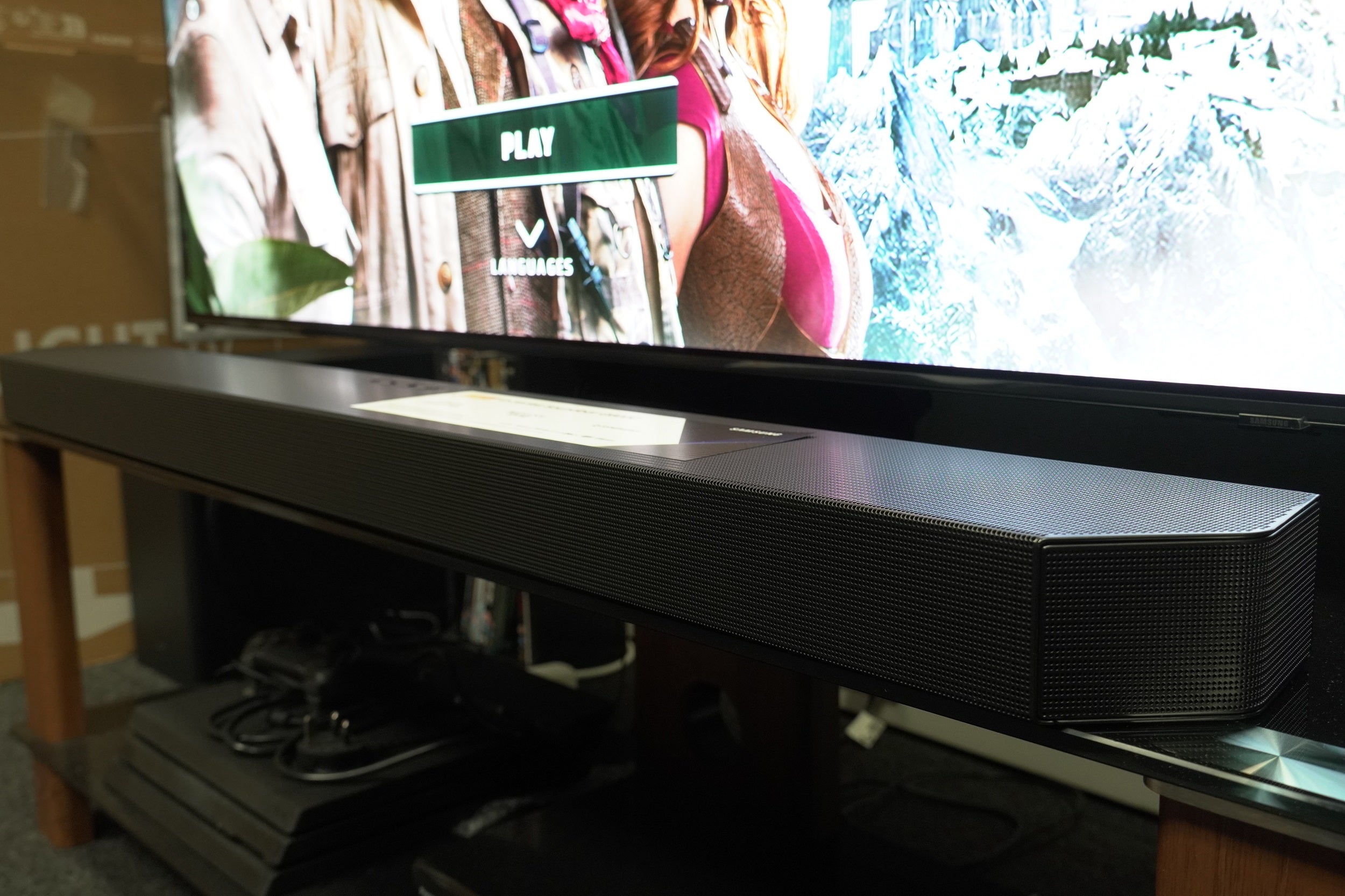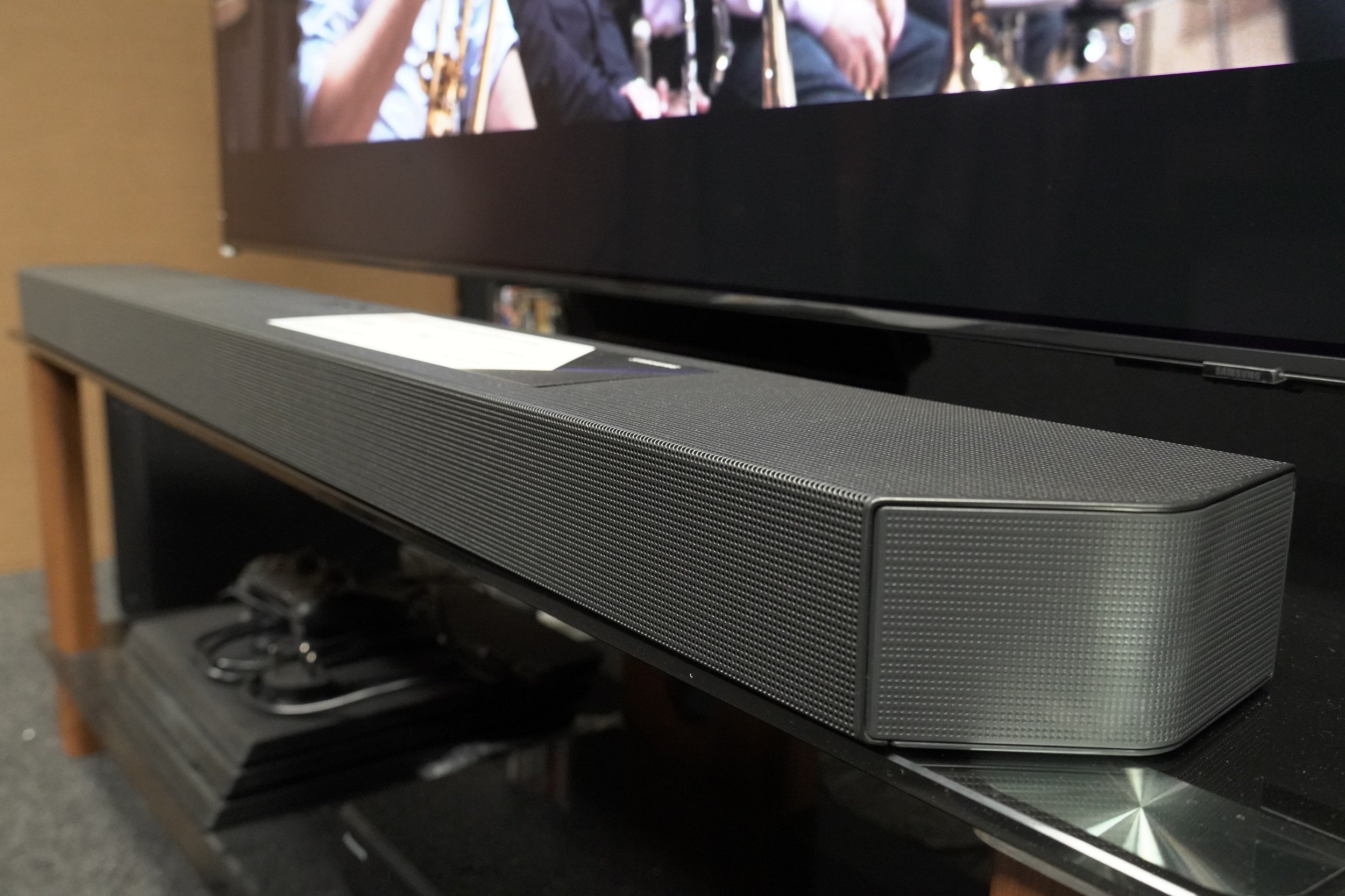Samsung HW-Q950A Review
Samsung's latest soundbar delivers an unprecedented channel count with spectacular results.


Verdict
The Q950A’s combination of immense power and huge channel count conjures up the most immersive and detailed experience with DTS:X and Dolby Atmos movies we’ve ever heard from a soundbar.
Pros
- Massively powerful, distortion-free movie soundtrack playback
- Creates a uniquely immersive sound stage
- Compact design for such a powerful system
Cons
- Expensive by soundbar standards
- No full auto-calibration system
- Ridiculous LED placement
Key Features
- Four-piece soundbar systemMain soundbar, two wireless rear speakers, one wireless subwoofer.
- Object-based sound format supportBoth Dolby Atmos and DTS:X soundtracks can be played.
- 16 real audio channelsThe Q950A is the first soundbar with an 11.1.4 speaker configuration.
- eARC HDMI supportPlayback of lossless Dolby Atmos or DTS:X soundtracks shipped via HDMI from compatible TVs
- 616W of powerUp slightly on last year’s Q950T, thanks to the power needed for the two new side-rear channels.
Introduction
Samsung’s flagship soundbars have earned an enviable reputation in recent years for turning ordinary living rooms into foundation-rocking home cinemas.
Having nailed the trick of getting huge volumes out of small boxes some time ago, though, Samsung now seems focused on ramping up the number of genuine audio channels it can support. Last year’s outstanding HW-Q950T flagship model managed 9.1.4 channels, and now the new HW-Q950A has stepped things up again by achieving a staggering, world-first 11.1.4 channels.
And we’re talking here about 16 genuine channels, where each channel gets its own dedicated driver(s). There’s no virtual channel creation going on.
Awesome although this looks on paper, however (world firsts always make handy marketing points), we have to wonder whether another increase to the channel count really improves the Q950A’s sound – or whether it’s more just a case of Samsung playing a ‘numbers’ marketing game. Let’s find out.
Availability
- UKRRP: £1599
- USARRP: $1599
- EuropeRRP: €1499
- CanadaRRP: CA$1799
- AustraliaRRP: AU$1499
The HW-Q950A costs £1599. That’s a fair sum for a soundbar, and immediately raises the charge that you could get a decent system of separates without spending much more.
However, the whole point of the Q950A is that it wants to rival the performance of a good separates system while offering up the convenience of a compact form factor. Its predecessors have consistently done a great job of achieving this aim, so hopes have to be high that its extra channels will make the Q950A even better.
At the time of writing, the Q950A sells in the US for $1599, which makes the UK price look a little harsh. But economies of scale mean that it’s hardly rare to see this sort of UK/US price comparison in the high-end AV tech world.
Design
- Compact for something so powerful
- eARC support over the TV HDMI
- The new rear speakers carry three drivers each, despite their compact size
At first glance, the Q950A looks pretty much identical to 2020’s HW-Q950T. Look closer, though, and the two wireless rear speakers at least are slightly different. They’re still the same size, but the addition of a new driver to their sides has led to small tweaks to their lines and finish.
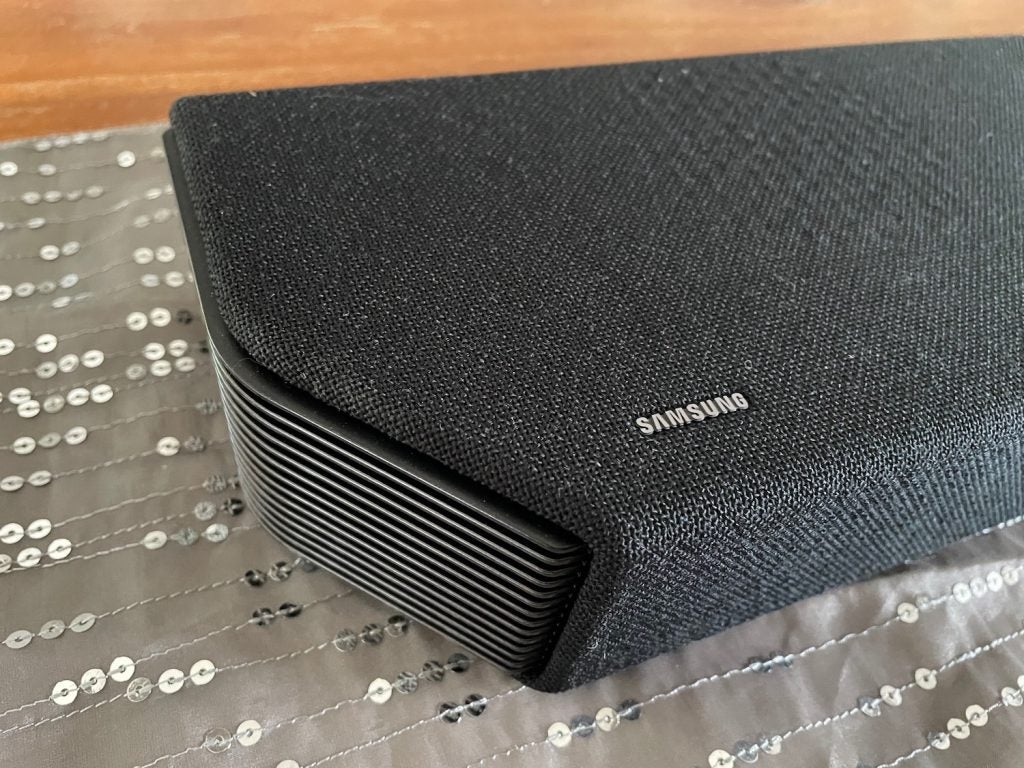
Managing to fit three potent drivers into speakers that can fit unobtrusively on a bookshelf or sideboard feels like a super-impressive engineering achievement. Although, if you do place them on a bookshelf, remember that the rears now need to have plenty of space above and to their outer-facing side, as well as in front, if you want to benefit from every channel they carry.
The main soundbar sports a black felt finish over its top and front edge, and an appealing metallic grille effect over its sides. The fabric has a habit of collecting dust and fluff, and I guess it could potentially tear if abused. But with a little TLC, you should be able to keep it looking reasonably pristine.
The soundbar is slim enough to fit under most TVs without creeping into the picture or blocking the TV’s IR receiver. The subwoofer is the only part of the package that runs large – but I’m not inclined to complain about that when the main reason for its bulk is the big old 8-inch driver that pumps bass out of its right-hand side.
As you’d expect of a high-end soundbar, the Q950A carries a small display to help you track the input you’ve selected, the volume level you’re using, and so on. Unfortunately, Samsung has seen fit to place this LED on the soundbar’s top edge, rather than its front. As such, you can only actually read it if you’re stood up bending over the soundbar. Presumably, someone at Samsung decided us couch potatoes need to get more exercise.
The Q950A’s connections are all tucked on the soundbar’s underside (with channels provided for cabling), and comprise two HDMI inputs, an HDMI output, and an optical digital audio input. The HDMI TV output also supports eARC, meaning it can carry lossless Dolby Atmos/DTS:X soundtracks to the soundbar from compatible TVs.
Features
- Dolby Atmos and DTS:X playback
- 11.1.4 channels of sound
- AirPlay 2 and ‘Tap’ mobile connection support
The Q950A’s headline-grabbing feature is its 11.1.4 channel count. This is more channels than any other soundbar has delivered before, with the main soundbar providing front-centre, left and right; front-side left and right; and two up-firing drivers. The new rears carry forward-facing drivers, up-firing drivers, and one side-firing driver each. The subwoofer, of course, provides just the single ‘.1’ bass channel.
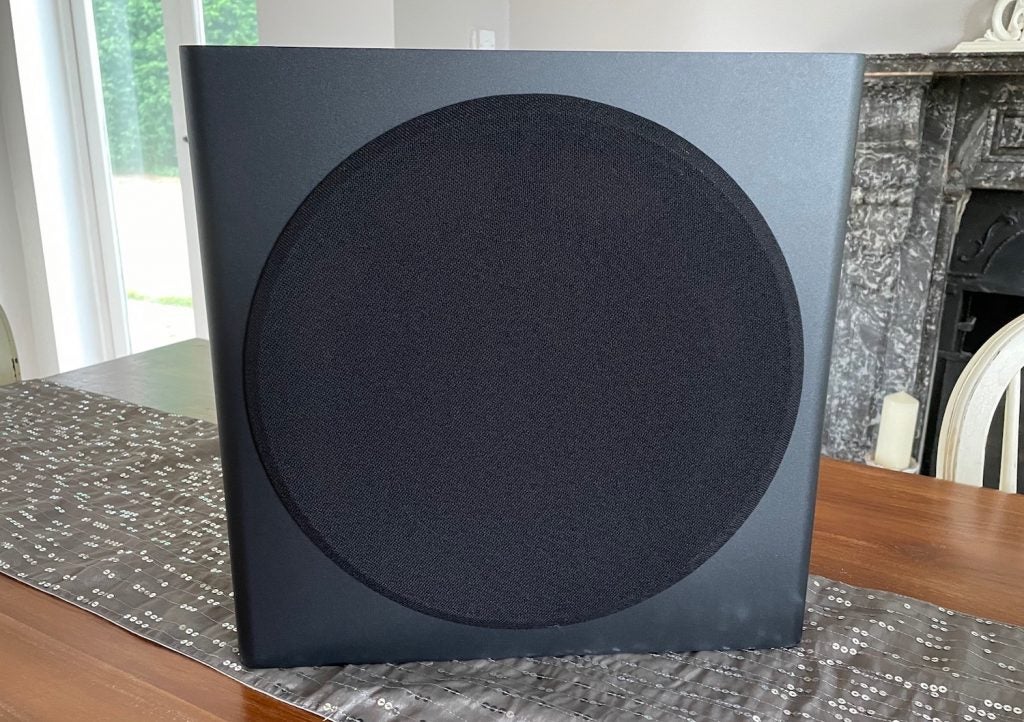
As you might guess from the above description, the up-firing channels work by bouncing height channel information from Atmos or DTS:X mixes off your ceiling. So, ideally, your ceiling won’t be either vaulted or heavily beamed.
The unprecedented number of channels are driven by more than 600W of audio power, and the main soundbar incorporates all the sound-improving tech – such as wide-angle tweeters to reduce the need to sit in a ‘sweet spot – Samsung has developed so successfully over the past few years.
As noted already, Dolby Atmos and DTS:X soundtracks are supported, and there’s processing on board to upconvert content with fewer native channels of sound, so that they make use of all the available channels/speakers. There’s no support for the special format of DTS:X used by IMAX Enhanced content, but rival soundbars that do support this are extremely rare – and IMAX Enhanced content is also hardly common.
The HDMI loopthrough system supports HDR10+ and Dolby Vision HDR, as well as the basic HDR10 HDR format. There’s no support for passthrough of 4K at 120Hz or VRR from PS5s, Xbox Series X or high-end PC cards, though.
On one level this is to be expected, given that no other soundbars support such high-bandwidth content either. Plus, you could always connect your cutting-edge console/PC directly to your TV and use the eARC feature to pass a game’s object-based sound out to the Q950A. However, most recently released AV receivers now carry HDMI passthrough for 4K/120Hz and VRR, so it might be nice if soundbars started following suit.

Bluetooth and Wi-Fi are both supported, of course, with AAC, WAV, FLAC, AIFF, MP3, OGG and ALAC high-resolution audio formats all playable. The potential sources of wireless music have been expanded with the Q950A, too, with the addition of AirPlay 2 support.
If you happen to own a Samsung phone running Android 8.6 or higher, you can even connect it to the soundbar simply by touching your phone against the main soundbar’s bodywork.
If you happen to be partnering the Q950A with a Samsung TV, meanwhile, you may be able to take advantage of Samsung’s surprisingly effective Q-Symphony feature. This sees the soundbar joining forces with the speakers in a Q-Symphony-capable Samsung TV to produce a larger soundstage.
Another feature that relies on having a compatible Samsung TV is SpaceFit Sound. This uses the microphone built into the TV to auto-calibrate the soundbar’s output to get the best results for your room. There’s also an Auto EQ feature you can use without needing a Samsung TV, which focuses on managing the bass element of the soundstage.
There’s no full built-in AutoCal system of the sort one or two rival premium soundbars provide, but at least there’s more going on in this respect than there was with 2020’s Q950T.
Samsung has imported the Active Voice Amplifier it brought in on its 2020 TVs to premium 2021 soundbars including the Q950A. When active, this boosts volume levels and tweaks the audio output, so that voices are more prominent in the mix when high levels of ambient room noise are detected.
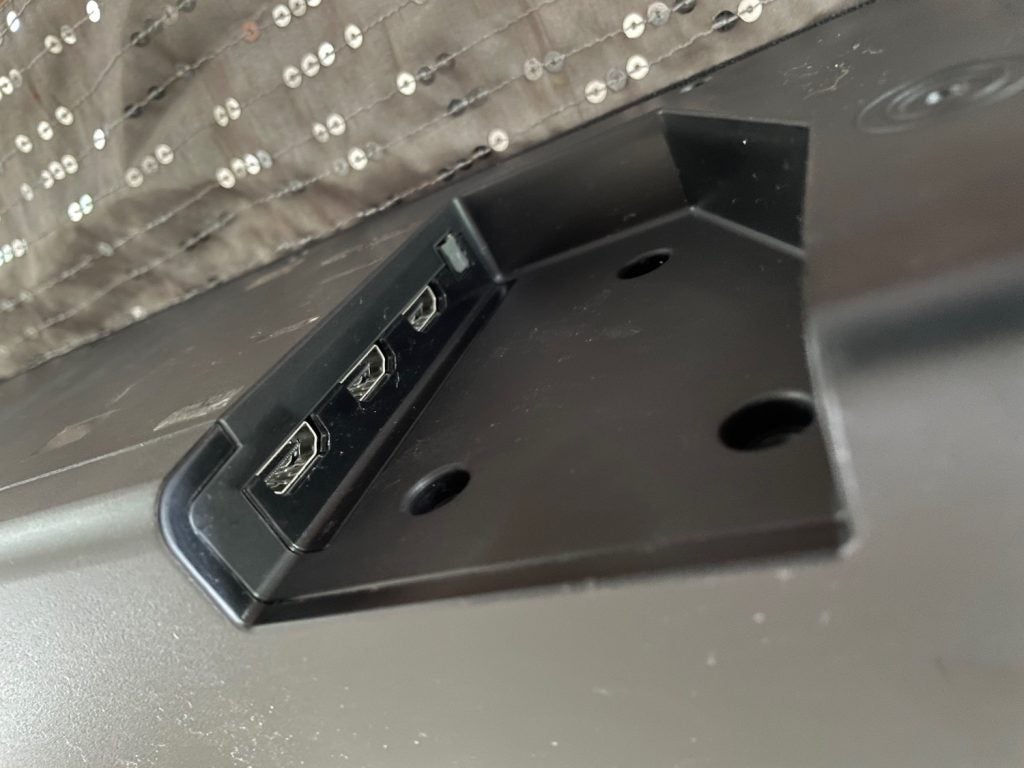
You can control the soundbar using your voice thanks to built-in Alexa support, and finally there’s a nice feature for gamers in the form of Game Mode Pro. This audio preset adjusts the sound profile so that more emphasis is placed on subtle surround details, and creating a more intimate, immediate surround sound experience that’s well suited to gaming.
Sound quality
- Increased feeling of width to the rear soundstage
- Deep and effective bass
- Impressive steering of effects
The Q950A’s addition of two extra channels does exactly what you’d hope: make the already impressive sound quality of Samsung’s flagship soundbars even better.
You can immediately hear the difference the two new channels make. For starters, the whole sense of sound coming from behind you is increased. Previously, our main complaint about the wireless rear speakers that Samsung supplies with its flagship soundbars has been their slight reticence compared with the fearsome power of the front channels and subwoofer.
With the Q950A, the sense of a new feeling of width to the rear soundstage greatly enhances the general impact of sound coming from behind you. So much so that while I typically crank up the rear-channel output levels on previous Samsung surround soundbars, here I actually nudged it down a notch.
Adding width to the rear soundstage also helps it tie in better with the Q950A’s front soundstage. Samsung added angled drivers to the main soundbar with last year’s Q950T model. This helpfully filled in one ‘gap’ in the three-dimensional sound stage that Dolby Atmos and DTS:X seek to create, but you can immediately sense how the new side-firing rear drivers fill in a couple of holes previously present off your left and right shoulders.

Anyone whose enjoyed a good Dolby Atmos or DTS:X experience will appreciate the importance to the 3D effect of feeling like you’re fully immersed in a hemisphere of sound. And by removing arguably the last ‘hole’ in the 360-degree soundstage, the Q950A delivers the most completely immersive sound I’ve heard from any soundbar to date.
There’s nothing ‘low res’ about the rear soundstage, either. Worries that the challenge of fitting three drivers into cabinets as small as those of the Q950A’s rears might lead to compressed, compromised sound don’t materialise. The full-blooded, rounded sound from all the rear drivers appears to be at least on a par with that of 2020’s Q950T.
Shifting focus to the more established parts of the Q950A package, both the main soundbar and the hefty subwoofer deliver the goods as emphatically as ever.
The power and presence created by the main soundbar stretches far beyond anything you’d imagine possible from its impressively slender, restrained size. The sound fills the whole front half of even really large rooms, yet thanks to the precision with which the soundbar’s many drivers propel their sound out to the correct position, there’s precious little about even the most dense film soundtracks that sounds vague or wishy-washy.
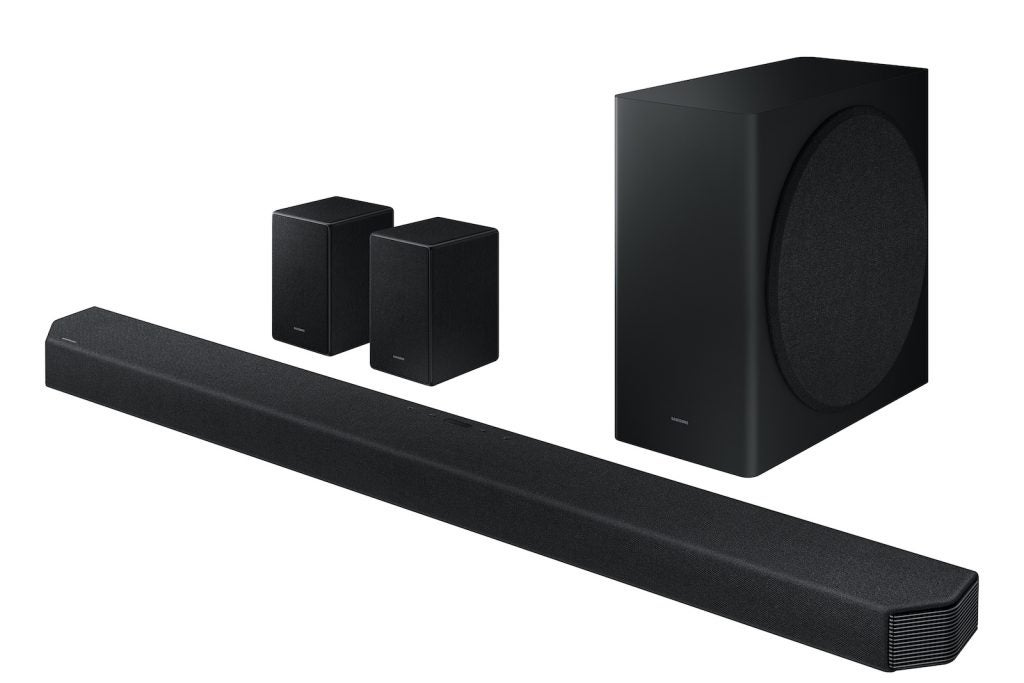
I did find that unlike the Q950T, I needed to slightly increase the volume of the Q950A’s centre channel to keep voices completely clear during action scenes. Perhaps because the two new rear channels have subtly shifted the overall balance of the sound. But with that simple task done, it was right back to being completely immersed in the Q950A’s sound, and marvelling at just how such a compact speaker could simultaneously deliver huge general ambience and the subtlest of details alongside the most aggressive of impact or gunfire sounds. Without any element falling flat or overwhelming anything else.
And then there’s the bass subwoofer. This can go deeper than the vast majority of other soundbar wireless subwoofers, but it also has enough range to its sound and speed to its response to always sound like it’s attached to the bottom of the main soundbar’s lower mid-range. It never just sounds like it’s rumbling randomly away merrily to itself independently of what the other speakers are doing.
There’s zero distortion or cabinet buzzing from any of the speakers or drivers either, even at volumes that push way beyond what your ears or neighbours will comfortably tolerate.
Awesome although the Samsung Q950A is at what it does, it doesn’t quite replicate the full potential charms of a well-specced separate system. When it comes to Dolby Atmos’s distinctive ‘overhead’ channels, for instance, the way the Q950A delivers these effects by reflecting upfired sound off your ceiling rather than directly from ceiling-mounted speakers does mean that height effects sound a little more ambient than precise.
You still get a sense of overhead transitions, with the angled up-firing drivers of the front and rear speakers managing to marry up with each other impressively well. But the absolute authority and precision available with ceiling-mounted speakers isn’t quite there.
To a lesser extent, the same can be said of the side channels that fire out of the main soundbar’s front corners.
Of course, though, likely the whole reason someone would be buying a Q950A is that they want to get as close as possible to the experience of a separates system without having speakers fixed to their ceiling and walls. And I can’t think of any other soundbar package I’ve heard to date that gets as close to the sound of a good separates surround sound system as the Samsung HW-Q950A.
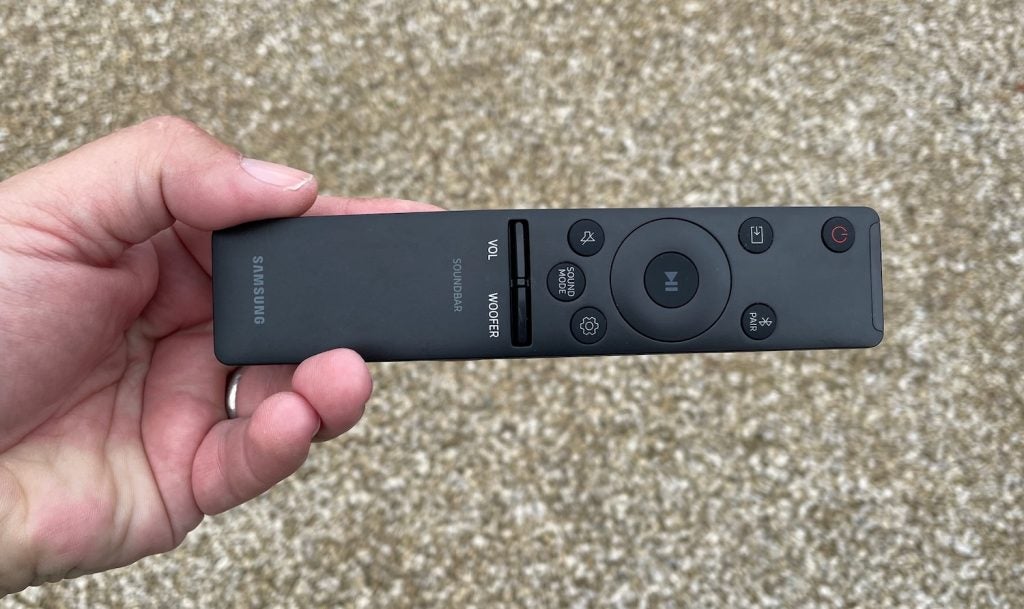
The immense power and steering precision that’s the Q950A’s big selling point doesn’t translate quite as effectively to music as it does to movies. There’s no doubting the soundbar’s ability to make music feel lively and powerful, and it can actually stage vocal tracks very nicely with stereo sources. But the overall feel may be a touch clinical and aggressive for serious hi-fi fans.
It’s important to add, though, that we’re currently seeing a surge in the amount of Dolby Atmos music that’s starting to appear on disc and via online streaming services. And with this the Q950A’s exceptional talent for creating 3D soundscapes continues to help it stand out from the crowd.
Should you buy it?
You want a phenomenally powerful movie performance No other soundbar delivers as much power with Dolby Atmos and DTS:X across as many real channels as the Q950A.
Your room has a vaulted or heavily beamed ceiling The way the soundbar bounces height effects off your ceiling can be compromised by irregular ceiling surfaces.
Verdict
The HW-Q950A has managed to add two more real audio channels without compromising the enormous power and clarity we’ve come to expect from Samsung’s high-end soundbars. In fact, the new channels reinforce just how much better Samsung is than arguably any other remotely mainstream soundbar brand at creating the feeling of a true three-dimensional soundscape, without needing a mountain of separate speakers.
FAQs
Yes, both Dolby Atmos and DTS:X are supported.
The soundbar supports a record-breaking 11.1.4 channels, thanks to two new rear side channels being added to the rear speakers.
Yes – but, unhelpfully, it’s positioned along the soundbar’s top edge, where you can’t see it while sat down.



